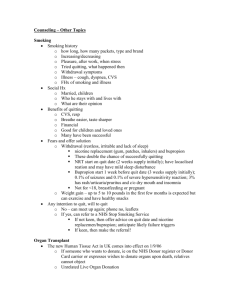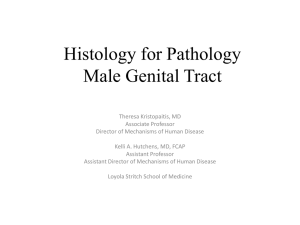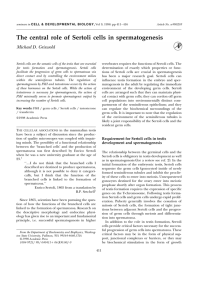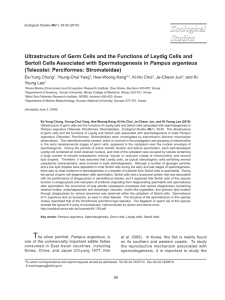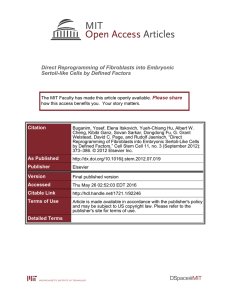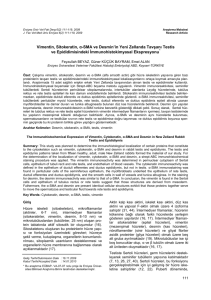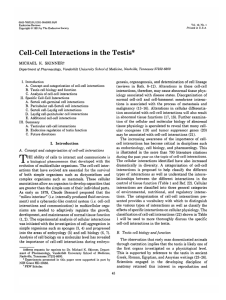Nongenomic actions of estrogen
advertisement
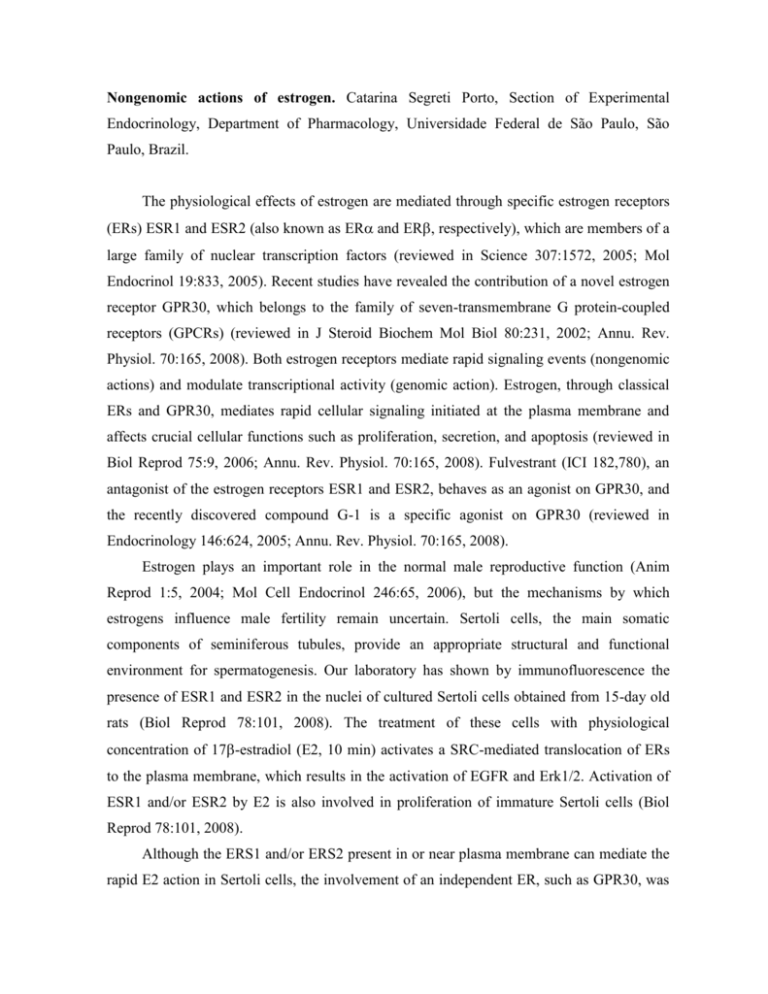
Nongenomic actions of estrogen. Catarina Segreti Porto, Section of Experimental Endocrinology, Department of Pharmacology, Universidade Federal de São Paulo, São Paulo, Brazil. The physiological effects of estrogen are mediated through specific estrogen receptors (ERs) ESR1 and ESR2 (also known as ER and ER, respectively), which are members of a large family of nuclear transcription factors (reviewed in Science 307:1572, 2005; Mol Endocrinol 19:833, 2005). Recent studies have revealed the contribution of a novel estrogen receptor GPR30, which belongs to the family of seven-transmembrane G protein-coupled receptors (GPCRs) (reviewed in J Steroid Biochem Mol Biol 80:231, 2002; Annu. Rev. Physiol. 70:165, 2008). Both estrogen receptors mediate rapid signaling events (nongenomic actions) and modulate transcriptional activity (genomic action). Estrogen, through classical ERs and GPR30, mediates rapid cellular signaling initiated at the plasma membrane and affects crucial cellular functions such as proliferation, secretion, and apoptosis (reviewed in Biol Reprod 75:9, 2006; Annu. Rev. Physiol. 70:165, 2008). Fulvestrant (ICI 182,780), an antagonist of the estrogen receptors ESR1 and ESR2, behaves as an agonist on GPR30, and the recently discovered compound G-1 is a specific agonist on GPR30 (reviewed in Endocrinology 146:624, 2005; Annu. Rev. Physiol. 70:165, 2008). Estrogen plays an important role in the normal male reproductive function (Anim Reprod 1:5, 2004; Mol Cell Endocrinol 246:65, 2006), but the mechanisms by which estrogens influence male fertility remain uncertain. Sertoli cells, the main somatic components of seminiferous tubules, provide an appropriate structural and functional environment for spermatogenesis. Our laboratory has shown by immunofluorescence the presence of ESR1 and ESR2 in the nuclei of cultured Sertoli cells obtained from 15-day old rats (Biol Reprod 78:101, 2008). The treatment of these cells with physiological concentration of 17-estradiol (E2, 10 min) activates a SRC-mediated translocation of ERs to the plasma membrane, which results in the activation of EGFR and Erk1/2. Activation of ESR1 and/or ESR2 by E2 is also involved in proliferation of immature Sertoli cells (Biol Reprod 78:101, 2008). Although the ERS1 and/or ERS2 present in or near plasma membrane can mediate the rapid E2 action in Sertoli cells, the involvement of an independent ER, such as GPR30, was not excluded in our previous report (Biol Reprod 78:101, 2008). In fact, E2 or fulvestrant also rapidly activate Erk1/2 after downregulation of ERS1 and ERS2 in Sertoli cells. GPR30 is present in these cells and co-localized with the endoplasmic reticulum and Golgi apparatus markers. These results are consistent with an intracellular localization for functional endogenous GPR30 in the endoplasmic reticulum, as previously reported in a number of cancer cell lines and neurons (Science 307:1625, 2005; Endocrinology 148:584, 2007). Fulvestrant and G-1 induce a rapid and transient increase in the phosphorylation state of Erk1/2 in Sertoli cells, suggesting that GPR30 is part of the E2 nongenomic signaling pathway in these cells. In addition, G-1 induces Sertoli cell proliferation. The stimulation of GPR30 in Sertoli cells results in the activation of cytoplasmatic Src-like tyrosine kinase family and transmembrane matrix metalloproteases, with a subsequent proteolytic release of EGF-like peptides such as heparin-bound EGF at the cell surface. The released ligands may activate EGFR in an autocrine or paracrine manner. Downstream signaling pathways from GPR30 include those of mitogen-activated protein kinases (MAPKs), which modulate nuclear transcriptional events and cell proliferation. Erk1/2 activation and CREB phosphorylation in Sertoli cells are essential for germ cell survival (Biol Reprod 72:745, 2005; Endocrinology 142:948, 2001). In conclusion, the estrogen actions in Sertoli cells might be a key step mediating cellular events important for spermatogenesis and fertility. Additional studies are now required to further elucidate the role of each estrogen receptor (ERS1, ERS2 and GPR30) in Sertoli cell biology and, consequently, in spermatogenesis and male (in)fertility. Supported by FAPESP and CNPq.



